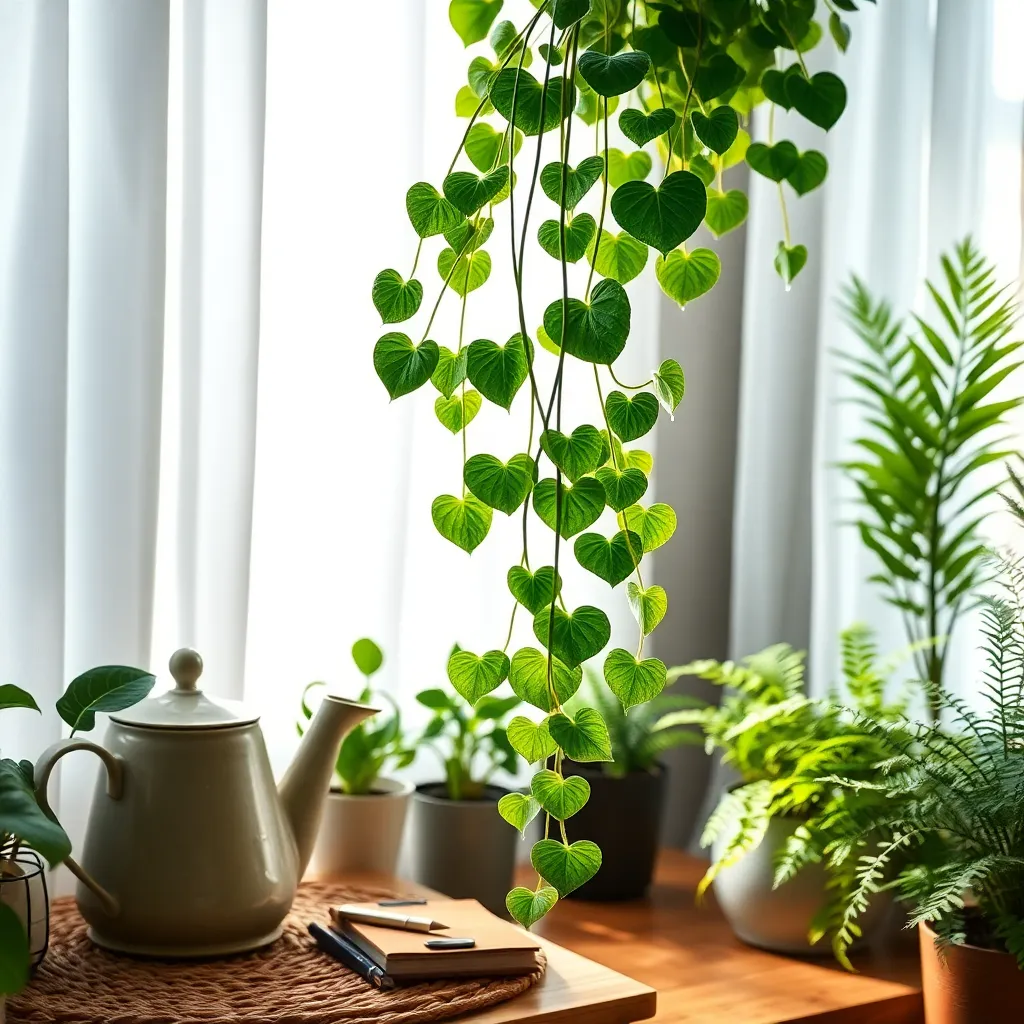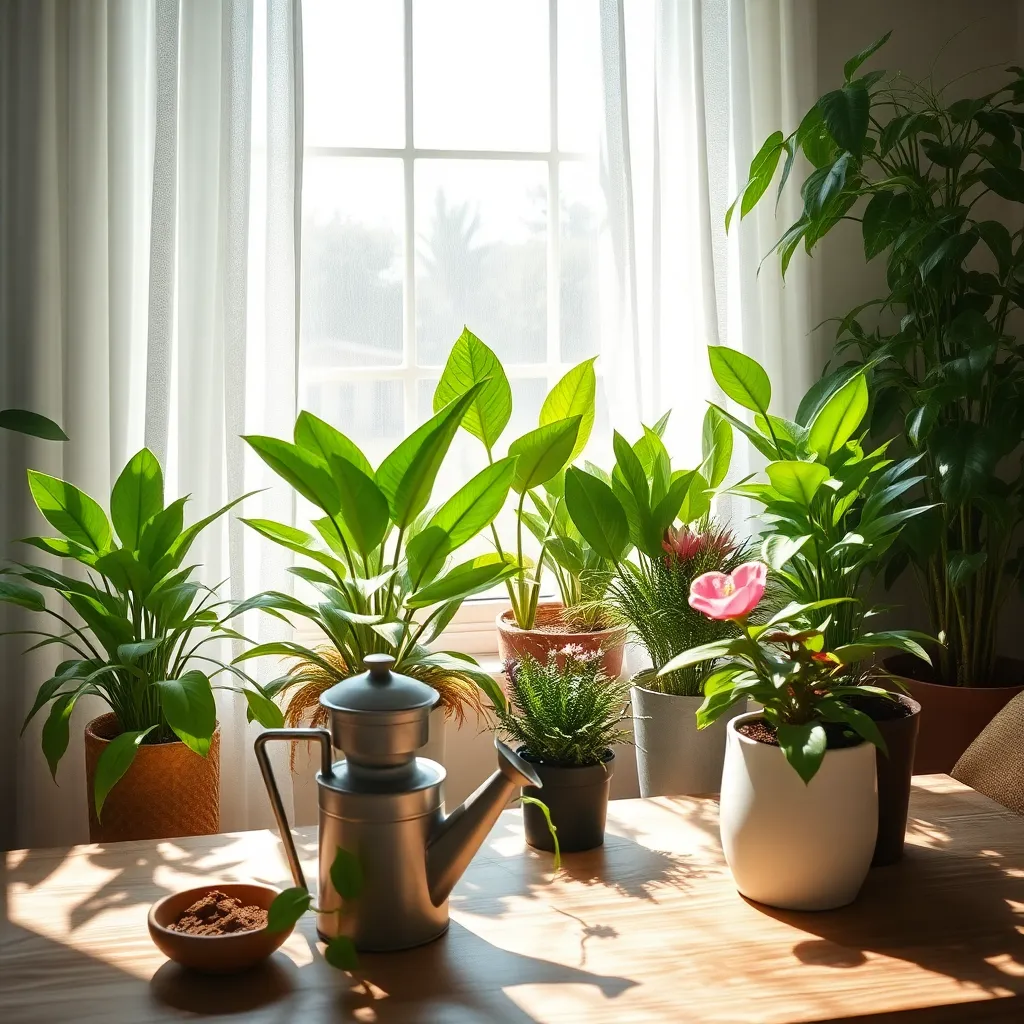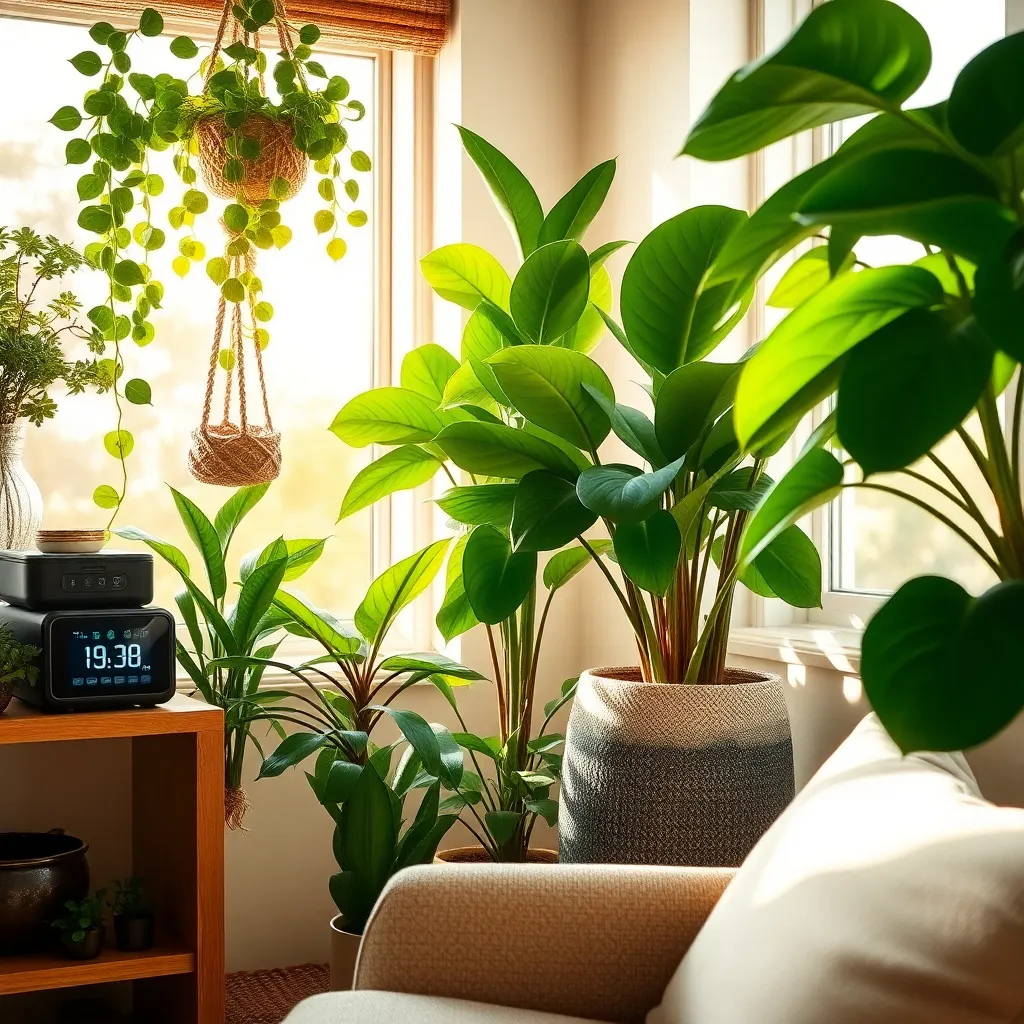Winter’s chill may strip the world outside of its verdant hues, but indoors, your plants can flourish with the right care. Whether you’re a novice just beginning your journey into the world of houseplants or a seasoned green thumb looking to refine your wintertime regimen, nurturing your indoor garden during the colder months is both a rewarding and essential task. As the days grow shorter and temperatures drop, indoor plants face unique challenges, and it’s up to us to ensure they continue to thrive.
In this article, we’ll delve into strategies that will help your plants not just survive, but truly prosper when warmth and sunlight are in short supply. You’ll learn how to adjust watering practices, manage light exposure, and create a cozy environment that mimics the conditions of their native habitats. By the end, you’ll feel confident and equipped to give your leafy companions the care they need to brighten your home all season long. Let’s embark on this winter gardening journey together, turning our indoor spaces into lush sanctuaries of life and growth.
Adjust Watering Schedule Accordingly

During winter, indoor plants generally require less water due to reduced growth rates and lower light levels. It is crucial to adjust your watering schedule to prevent overwatering, which can lead to root rot.
Check the soil moisture before watering by inserting your finger about an inch deep into the soil. If it feels dry, it’s time to water, but if it’s still damp, wait a few more days to avoid excess moisture.
Consider the type of plant you have, as succulents and cacti, for example, need far less frequent watering compared to ferns or tropical plants. For these plants, water only when the soil is completely dry to the touch.
To ensure even moisture distribution, water the plant thoroughly until you see water draining from the bottom of the pot. Be sure to empty any excess water from saucers or trays to prevent standing water, which can attract pests and cause root issues.
Provide Adequate Humidity Levels

During winter, indoor plants often struggle with low humidity levels, which can lead to dry leaf tips and poor growth. To combat this, consider using a humidifier in the room where your plants are located, keeping humidity levels between 40% and 60% for optimal plant health.
Another effective way to increase humidity is by placing your plants on a humidity tray. Simply fill a shallow tray with pebbles and water, ensuring the base of the pot is above the water level to prevent root rot.
Grouping plants together can also create a micro-environment that naturally raises humidity, benefiting all the plants in the cluster. This technique mimics their natural habitats, where plants grow closely together, enhancing their overall well-being.
For more advanced care, you can mist your plants regularly, but be sure to do this in the morning to allow leaves time to dry. Misting is particularly beneficial for tropical plants, such as ferns and orchids, which thrive in high-humidity environments.
Ensure Proper Light Exposure

During winter, ensuring your indoor plants receive adequate light exposure is crucial for their health. Many plants experience reduced growth due to shorter daylight hours, so it’s important to address this change by adjusting their location.
Consider placing your plants near south-facing windows, which typically receive the most sunlight during winter. If natural light is limited, supplement with artificial lights like LED grow lights, which can provide the necessary spectrum to keep your plants thriving.
Remember to rotate your plants regularly to ensure even light exposure on all sides. This practice prevents your plants from leaning toward the light, promoting a more balanced growth pattern.
For advanced gardeners, adjusting the light duration with timers can mimic natural cycles, fostering an ideal environment. Use a timer to provide about 12-16 hours of light per day, especially for plants that are sensitive to light changes, such as orchids or succulents.
Maintain Optimal Indoor Temperatures

Maintaining optimal indoor temperatures is crucial for keeping your indoor plants healthy during winter. Most houseplants thrive in temperatures between 65 to 75 degrees Fahrenheit during the day and slightly cooler at night.
To ensure your plants stay within this temperature range, avoid placing them near drafts or heat sources like radiators and fireplaces. These temperature extremes can stress your plants, leading to leaf drop or other issues.
Regularly monitor the temperature in your plant’s location using a thermometer. If your home tends to be cooler, consider using a small space heater to keep the area warm, but ensure it doesn’t blow directly on the plants to prevent drying out the foliage.
Consider grouping plants together to create a microclimate, which can help maintain humidity and temperature levels. This strategy is particularly beneficial for tropical plants that prefer consistent warmth and humidity.
Inspect for Pests and Diseases

As winter progresses, it’s crucial to regularly inspect your indoor plants for pests and diseases. Look closely at the undersides of leaves and stems where pests often hide, using a magnifying glass for a more detailed view.
Develop a routine to check your plants at least once a week, especially plants that are prone to issues like spider mites or aphids. Early detection can prevent infestations from spreading, saving you time and effort in the long run.
Maintain a clean environment by removing any fallen leaves or debris that could harbor pests. If you find signs of pests, such as sticky residue or webbing, consider using a gentle insecticidal soap or neem oil to treat affected plants.
For more stubborn infestations, it’s beneficial to isolate affected plants to prevent pests from moving to healthy ones. Advanced gardeners might employ beneficial insects, such as ladybugs, which can help control pest populations naturally indoors.
Conclusion: Growing Success with These Plants
As the winter chill sets in, nurturing your indoor plants becomes a rewarding opportunity to strengthen your relationship with nature and those around you. This article explored five key concepts: understanding your plants’ seasonal needs, adjusting watering habits, managing lighting conditions, improving humidity, and preventing pests. Each step not only enhances your plants’ health but also mirrors the nurturing required in human relationships.
To put this knowledge into action, start by evaluating your plant care routine today. Make small adjustments like repositioning your plants closer to natural light or investing in a humidifier to create a more hospitable indoor environment.
Remember, just as plants thrive with attentive care, relationships flourish when we are mindful and proactive. Bookmark this article now so you can revisit these insights and continue cultivating a green and loving home. As you apply these principles, you’ll find that the patience and dedication you extend to your plants can transform your relationships, fostering a warmer and more harmonious connection with the world around you. Here’s to thriving relationships, both botanical and human!

